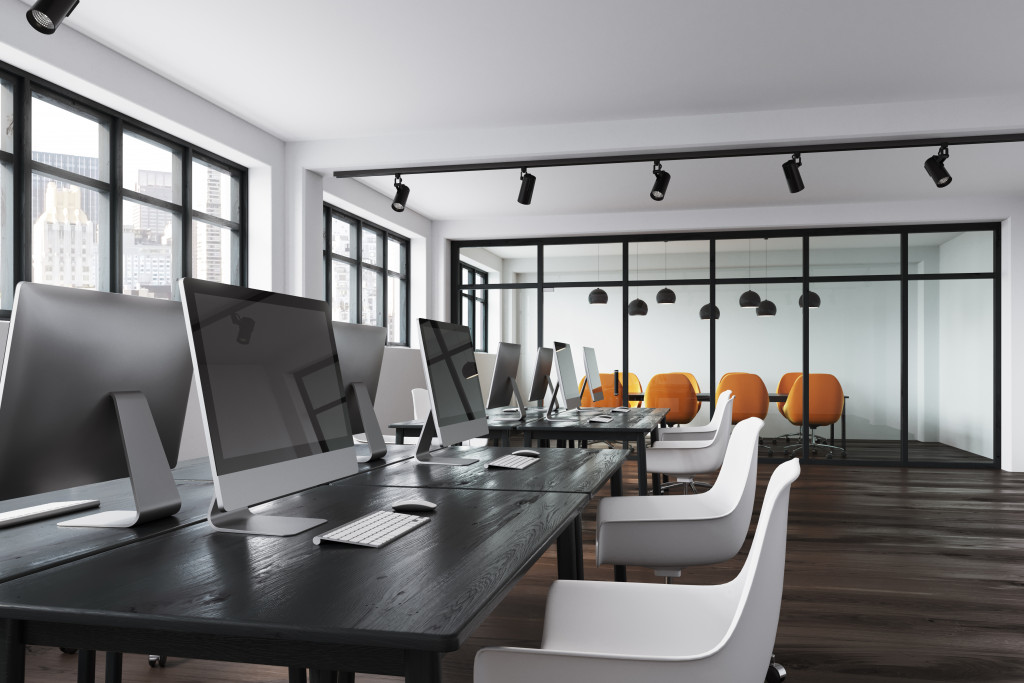Creating a flexible office space can help improve productivity and creativity in the workplace. While there are many ways to create a flexible office, some methods work better for certain kinds of business operations. Here are some ideas that you can explore if you’re looking for ways to create a flexible office space:
1. Encourage employees to work remotely.
If your business can operate effectively with some employees working from home, then this is a great way to create a flexible office space. Employees who have the option to work remotely will appreciate the flexibility and will likely be more productive. Plus, you’ll save on office space and costs with fewer employees working in the building.
2. Plan a flexible office layout.
When you’re designing your office space, plan for a layout that you can easily reconfigure. This way, if you need to change the way the office is laid out, it won’t be a major undertaking. Try using modular furniture and demountable glass wall systems that can be rearranged as needed. You can also create different zones within the office for specific activities, such as quiet areas for concentration and collaboration areas for team projects.
3. Take advantage of technology.
There are several ways that technology can help you create a flexible office space. For example, you can use video conferencing to hold meetings without everyone being in the same room. You can also use online project management tools to keep everyone on the same page, regardless of where they work. Using technology to create a flexible office space makes it easier for employees to work together, even when they’re not in the same physical space.

4. Implement hot desking.
Hot desking is a flexible office arrangement where employees don’t have assigned desks or workspaces. Instead, employees can choose to sit anywhere in the office that they want on any given day. This type of arrangement can be beneficial if your employees need to collaborate often or if you have a lot of employees who work remotely. If you implement hot-desking, be sure to provide plenty of storage options so that employees can keep their belongings organized.
5. Allow for flexible hours.
Another way to create a flexible office space is to allow for flexible hours. This can be a great option if your employees have different schedules or if you want to give employees the option to work from home occasionally. Flexible hours can also help you save on office space by allowing more employees to share the same workspace. Differentiate between part-time and full-time employees so that those who work more hours have access to the office during the times when they’re needed
6. Use a shared workspace.
If you don’t have enough space for all of your employees to have their own desks, you can use a shared workspace. This is a great way to save on space and costs, and it can also create a more flexible office space. Employees can share desks, printers, and other common office equipment, and they can also use the shared workspace to collaborate on projects.
7. Create an open office concept.
An open office concept can help create a more flexible office space by breaking down barriers between employees. This type of office layout is beneficial for businesses that encourage collaboration and creativity. Plus, an open office concept can help save on space and costs. If you decide to go with an open office concept, be sure to include plenty of areas for employees to focus and concentrate.
8. Allow employees to bring their pets to work.
If your business is pet-friendly, allow employees to bring their pets to work. This can help create a more relaxed and flexible office environment. Plus, employees will appreciate being able to spend time with their pets during the workday. Just be sure to put some rules in place, such as requiring employees to keep their pets on a leash and providing designated areas for pets to relieve themselves.
9. Offer on-site childcare.
If you have many employees with young children, you can offer on-site childcare. This can help employees balance their work and home responsibilities and create a more flexible office environment. On-site childcare can be a great perk for employees, and it can also help you attract and retain top talent.
10. Make your office space sustainable.
Finally, sustainability is an important consideration for many businesses nowadays. Suppose you want to create a flexible office space that’s also sustainable. You can use energy-efficient lighting and appliances, recycle and reuse office materials, and encourage employees to carpool or take public transportation to work. By making your office space sustainable, you can help reduce your business’s impact on the environment.
There are many ways to create a flexible office space. Implementing some of these tips can make your office more accommodating for your employees and help create a productive and efficient workplace. Always keep your employees’ needs in mind when making changes to your office space, and communicate any changes you make.

